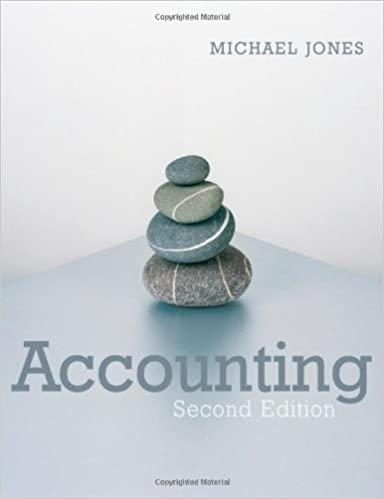
Q2. On January 01, 2016, Delmon Company acquired Eagle Company 8%, $5,000 face value bonds, as an investment, at their then fair value of $4,800. The bonds mature on December 31, 2020 and pay interest annually on December 31. Delmon has prepared a partial amortization schedule, along with information about the fair value of the bonds at the end of each year. (For simplicity, I assume Delmon uses straight-line amortization of the discount.) FV minus AC Fair Value (FV) $4,800 4,600 4,780 Discount Amortized Received Amortized Cost (AC) $4,800 400 4,840 400 4,880 400 4,920 400 4,960 400 5,000 2.000 200 Date (Bond investment acquired) 01/01/2016 12/31/2016 12/31/2017 12/31/2018 12/31/2019 (Bond investment matures) 12/31/2020 Total (240) (100) Values not supplied A. Before considering any gains and losses on the Eagle Bond Investment resulting from changes in investment's fair value for 2016 and 2017, Delmon has the following 12/31/2017 balances: RE $1000 (cr.) and AOCI $3,000 (dr). Find the balances for RE and AOCI on 12/31/2017 after considering any and all gains and losses on the Eagle Bond Investment for 2016 and 2017. Find the balances for three different cases: (1) the bond investment is classified as HTM, (11) the investment is classified as AFS, and (111) the investment is classified as trading security. Calculations must be in good order and well-labelled, with a short explanation is required for each case. Indicate whether the account balance at 12/31/2017 is a debit or a credit. Answers: (1) RE = AOCI= (1) RE = AOCI= (111) RE AOCI= Calculations: Q2. On January 01, 2016, Delmon Company acquired Eagle Company 8%, $5,000 face value bonds, as an investment, at their then fair value of $4,800. The bonds mature on December 31, 2020 and pay interest annually on December 31. Delmon has prepared a partial amortization schedule, along with information about the fair value of the bonds at the end of each year. (For simplicity, I assume Delmon uses straight-line amortization of the discount.) FV minus AC Fair Value (FV) $4,800 4,600 4,780 Discount Amortized Received Amortized Cost (AC) $4,800 400 4,840 400 4,880 400 4,920 400 4,960 400 5,000 2.000 200 Date (Bond investment acquired) 01/01/2016 12/31/2016 12/31/2017 12/31/2018 12/31/2019 (Bond investment matures) 12/31/2020 Total (240) (100) Values not supplied A. Before considering any gains and losses on the Eagle Bond Investment resulting from changes in investment's fair value for 2016 and 2017, Delmon has the following 12/31/2017 balances: RE $1000 (cr.) and AOCI $3,000 (dr). Find the balances for RE and AOCI on 12/31/2017 after considering any and all gains and losses on the Eagle Bond Investment for 2016 and 2017. Find the balances for three different cases: (1) the bond investment is classified as HTM, (11) the investment is classified as AFS, and (111) the investment is classified as trading security. Calculations must be in good order and well-labelled, with a short explanation is required for each case. Indicate whether the account balance at 12/31/2017 is a debit or a credit. Answers: (1) RE = AOCI= (1) RE = AOCI= (111) RE AOCI= Calculations







